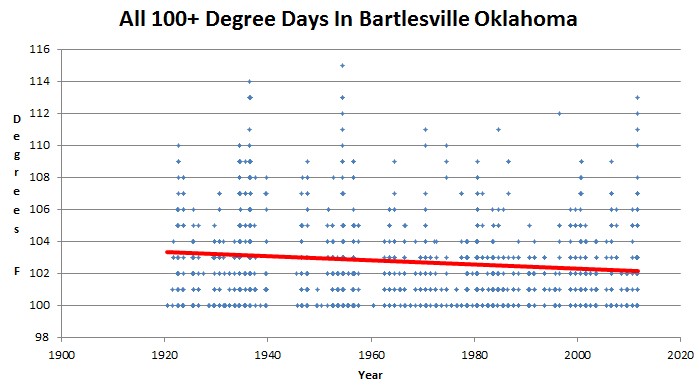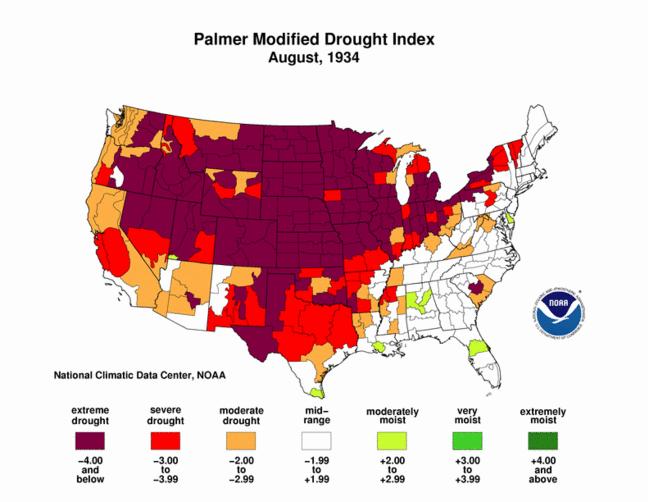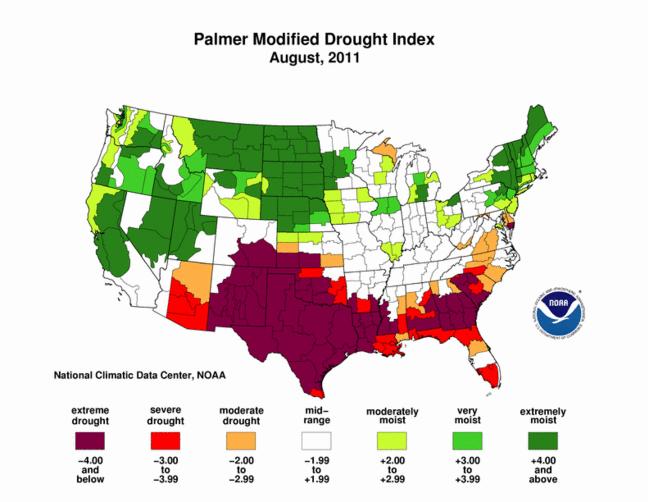The new normal in climate science is to distort climate records from the 1930s.
After recalculating data from last year, the nation’s climatologists are declaring that Oklahoma suffered through the hottest summer ever recorded in the U.S. last year — not Texas as initially announced last fall.
“It doesn’t make me feel any better,” joked Texas rancher Debbie Davis, who lives northwest ofSan Antonio.
In the new tally by the National Climatic Data Center, Oklahoma’s average temperature last summer was 86.9 degrees, while Texas finished with 86.7 degrees. The previous record for the hottest summer was 85.2 degrees set in 1934 — in Oklahoma.
NCDC’s data shows that the Oklahoma City summer of 1934 had 61 days over 100 degrees, compared to only 38 days in 2011.
The graph below shows all 100+ degree days ever recorded at Oklahoma City, which have been on the decline. Nine of Oklahoma City’s ten hottest days occurred before 1960.
U.S. Historical Climatology Network
Even more disgusting is their failure to discuss the drought of 1934, which was by far the worst in US history. Much of the population abandoned Oklahoma during the 1930s, because the heat and drought made it unlivable. The Dust Bowl was an important part of Oklahoma history, as chronicled by Steinbeck in “The Grapes Of Wrath.” NASA and NOAA appear determined to erase the Dust Bowl from our memory.
Compare vs. 2011
h/t to Marc Morano






All of our institutions have been suborned by the incompetent climate consensus on “global warming”, and the whole fiasco is, disastrously, politically driven now, quite apart from the scientific incompetence that allowed it to happen, and to miseducate two whole generations (and counting) of scientists. The root question, which–amazingly–no scientist can yet answer satisfactorily (quantitatively and precisely), is “How is the atmosphere warmed to begin with, quite apart from any supposedly increasing greenhouse effect?” To answer that question, science first needs to drop the science fiction/fantasy of the idea of “runaway climate”, and accept that the atmosphere has a stable vertical temperature distribution that is unaffected by any internal “radiative forcing” of any kind (whether by clouds, the planetary surface, or from atmospheric “greenhouse gases”), but only by the Sun’s incident radiation. That stable state is well known, as the long-recognized Standard Atmosphere. As a proper Venus/Earth temperature comparison shows, the troposphere is fundamentally warmed only by direct absorption of incident solar infrared radiation (and the same physical fraction of the incident solar radiation warms the tropospheres of both Venus and Earth, so that the ratio of their temperatures, at any given pressure, is due only to the ratio of their distances from the Sun–the square root of that ratio, in accordance with the Stefan-Boltzmann formula).